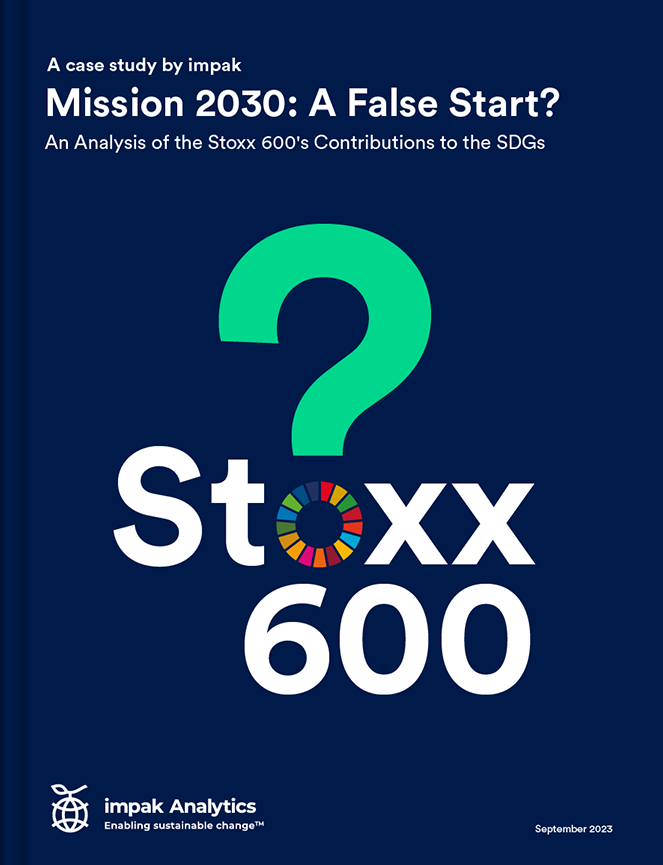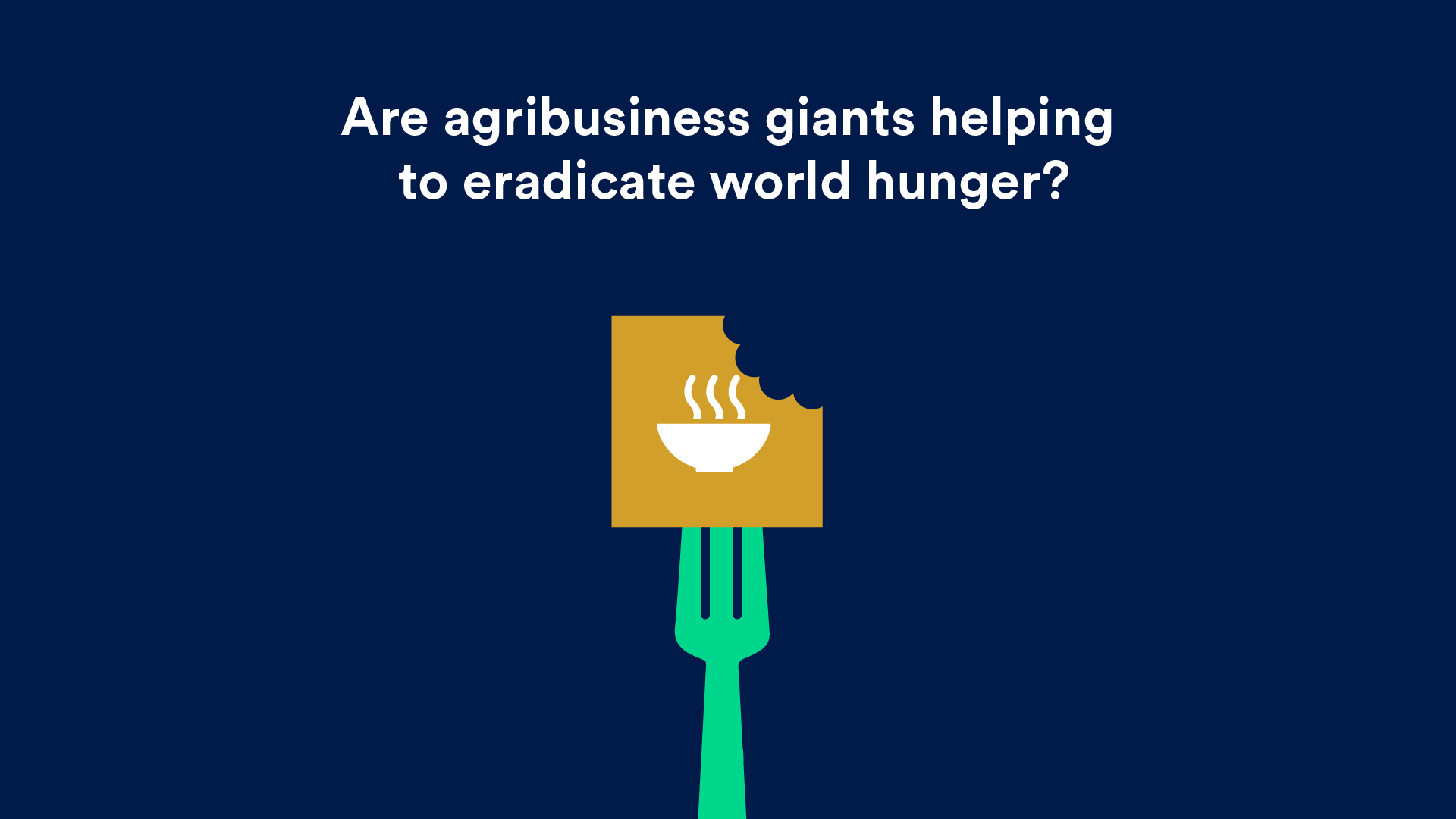Mission 2030: A False Start?
The first study of its kind

Are STOXX 600 companies on track with the SDGs?
The STOXX 600 needs to truly address the challenges we are currently facing. The time has come to set the records straight in order to correct the trajectory.
Our study analyzes the STOXX 600 index—a compilation of the 600 largest listed companies in 17 of the most developed countries in Europe. This index’s diversified industry allocations (Industrials – 23% of allocations, Financials – 18%, Consumer Discretionary – 13%) provide insights into critical global issues. These range from the highest GHG emitting sectors, such as iron and steel, and chemicals, to human rights violations lurking in our clothes’ supply chains, to the unethical business practices to which our banks are exposed.
We leveraged public data and our proprietary analysis tool —the impak SDG Alignment (iSA)— which employs a double materiality assessment to measure a company’s positive and negative contributions to the SDGs by analyzing its products, services, practices, and policies within its operations and supply chain. impak Analytics evaluates SDG positive contributions by calculating percentages of activities of a company, representing estimated revenues from products or services, contributing to an SDG (e.g. renewable energy generation for SDG 7).
Our study shows that 4% of the total STOXX 600’s combined revenue has a positive contribution to the SDGs. In reality, only 15% of the STOXX 600 companies generate one or more positive contributions; and, on average, only 29% of their combined revenues align with the SDGs. The rest? Either neutral or a negative contribution (see below).
Furthermore, analyzing the SDG distribution reveals interesting trends. Within the 15% of companies positively contributing, companies focus their positive contribution more on certain goals like affordable and clean energy (SDG 7 with 39% of companies contributing to this SDG), good health and well-being (SDG 3 – 25%), and climate action (SDG 13 – 16%), while overlooking others like biodiversity (SDGs 14 and 15), quality education (SDG 4), and gender equality (SDG 5) despite them being some of the most pressing global risks at the moment.
With the spotlight on SDGs 3, 7, and 13 one could assume they are deeply integrated within companies’ models and drive substantial revenues. Our analysis tends to demonstrate otherwise. On average, companies contribute 24% of their total revenues to SDG 7. While this may seem promising, with rising energy prices, and declining financial support for clean energy in low- and middle-income nations, the achievement of SDG 7 still seems out of reach. Are companies effectively targeting the right stakeholders, and directing their SDG-related products and services where the achievement gap is most pronounced?
To understand corporate commitments to the SDGs, we have examined both their positive and negative contributions which revealed that almost two-thirds of companies in the STOXX 600 are not effectively mitigating their material negative contributions. This demonstrates that companies still have a lot to do in terms of acknowledgment of their negative contributions and accountability toward stakeholders.
You may also like

Why agribusiness giants won’t save the world from hunger.
By impak Analytics
Are companies prepared for CSRD?
By impak Analytics